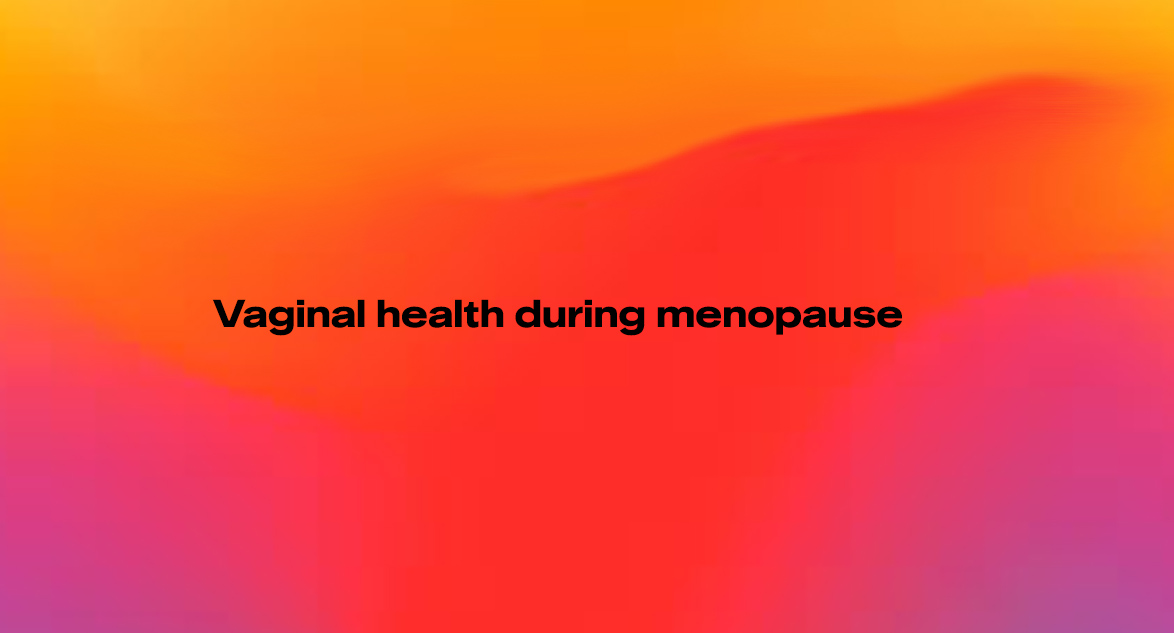Menopause, a natural phase in a woman’s life, brings about hormonal changes that significantly impact various aspects of health. One area often overlooked is vaginal and urinary health, which can be adversely affected by hypoestrogenism, leading to a condition known as genitourinary syndrome. This syndrome encompasses a range of genital and urinary symptoms, impacting the daily lives and relationships of postmenopausal women.
Genitourinary Syndrome: Formerly Vulvovaginal Atrophy
Formerly referred to as vulvovaginal atrophy, genitourinary syndrome manifests with symptoms such as dryness, burning, irritation, discomfort or pain during intercourse, and impaired sexual function. Additionally, it may present with urinary signs like incontinence, dysuria, stranguria, and increased susceptibility to urinary tract infections.
Chronic Nature and Impact on Quality of Life
Unlike transient menopausal symptoms, vulvovaginal atrophy is a chronic condition that tends to worsen in the postmenopausal years. Its long-term effects can significantly impact the daily lives and relationships of postmenopausal women, emphasizing the need for prompt and sustained therapeutic intervention.
Prevalence and Underdiagnosis
Recent studies indicate a prevalence of vulvovaginal atrophy ranging from 36% to almost 90% in peri- and postmenopausal women. Alarmingly, this condition is also emerging in the premenopausal years, affecting 19% of women aged 40-45. Despite its high prevalence, vulvovaginal atrophy remains underdiagnosed and undertreated. Many women do not discuss their symptoms with their gynecologists, often due to misconceptions about aging or embarrassment.
Understanding the Triggers
The decline in circulating hormone levels, especially estrogen, is the primary trigger for vulvovaginal atrophy. Postmenopausal women exhibit changes in the vaginal epithelium, characterized by flattened surfaces, keratinization, and reduced glycogen stores. This alteration leads to a decrease in lactobacilli, resulting in an elevated vaginal pH.
Treatment Options for Improved Quality of Life
Recognizing the significance of addressing vulvovaginal atrophy, various treatment options have been developed. These include local and systemic hormonal treatments, non-hormonal interventions, and energy-based treatments. Tailoring the approach to individual needs and preferences is crucial in improving the quality of life for postmenopausal women.
Overcoming Barriers to Diagnosis
Despite the prevalence of vulvovaginal atrophy, barriers to diagnosis persist. Women often attribute symptoms to natural aging, feel embarrassed discussing the matter, or are unaware of available treatments. Overcoming these barriers is essential for effective care and management of this condition.
Clinical Signs and Symptoms
Clinical manifestations of hypoestrogenic vaginal conditions encompass a spectrum, ranging from dryness, redness, and inflammation to fibrosis and vaginal effacement. Changes in connective tissue composition, including a reduced type I/III collagen ratio, contribute to diminished tissue strength. Vulvar signs include decreased tissue thickness, labial agglutination, loss of pubic hair, and pruritus-induced lesions.
In conclusion, understanding and addressing genitourinary syndrome, formerly known as vulvovaginal atrophy, is crucial for the well-being of postmenopausal women. As a prevalent yet underdiagnosed condition, it is imperative to break the silence surrounding its symptoms. By fostering open communication, raising awareness, and embracing the variety of available treatments, we can empower women to navigate through menopause with improved vaginal and urinary health, ultimately enhancing their overall quality of life.

Leave a Reply